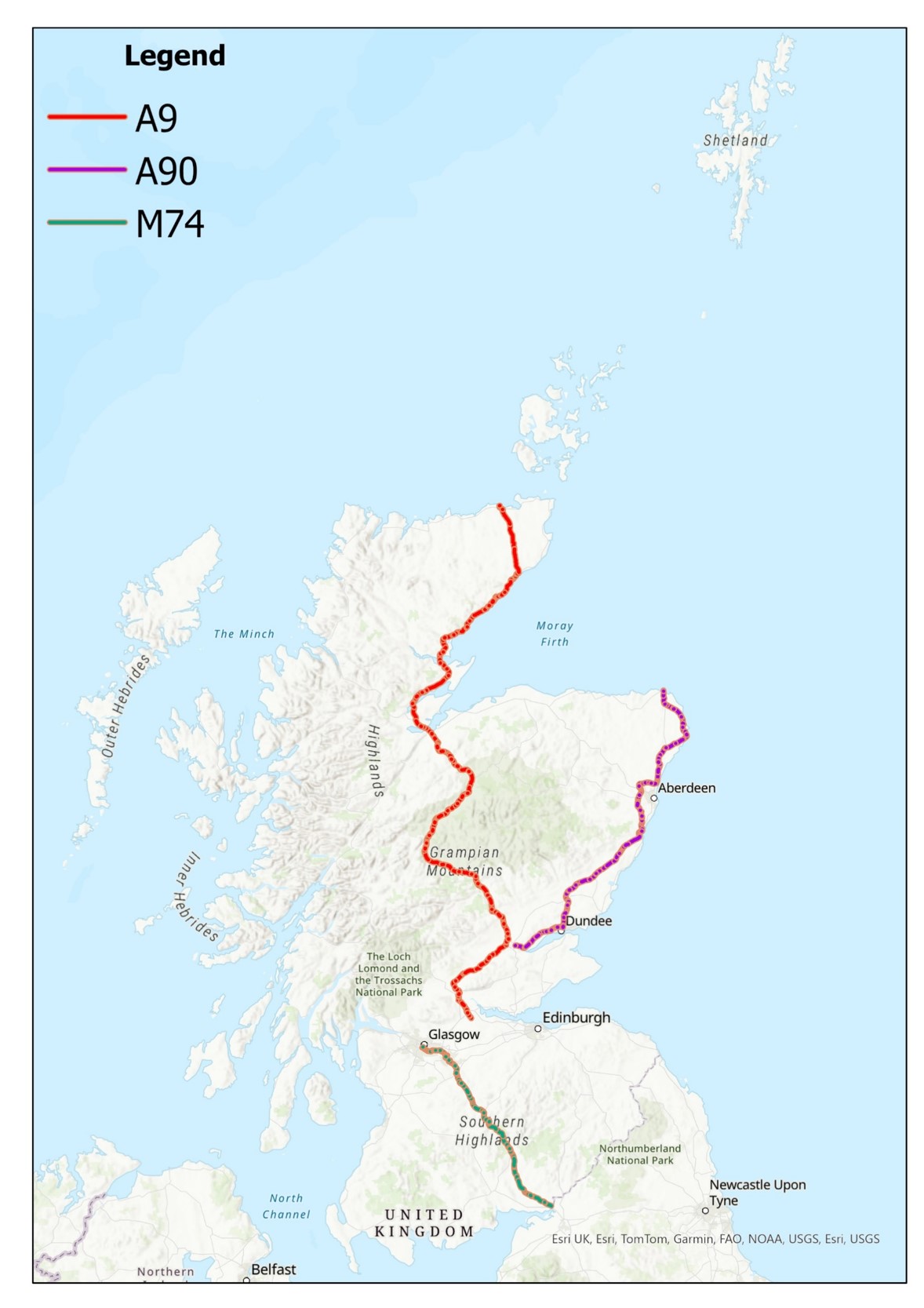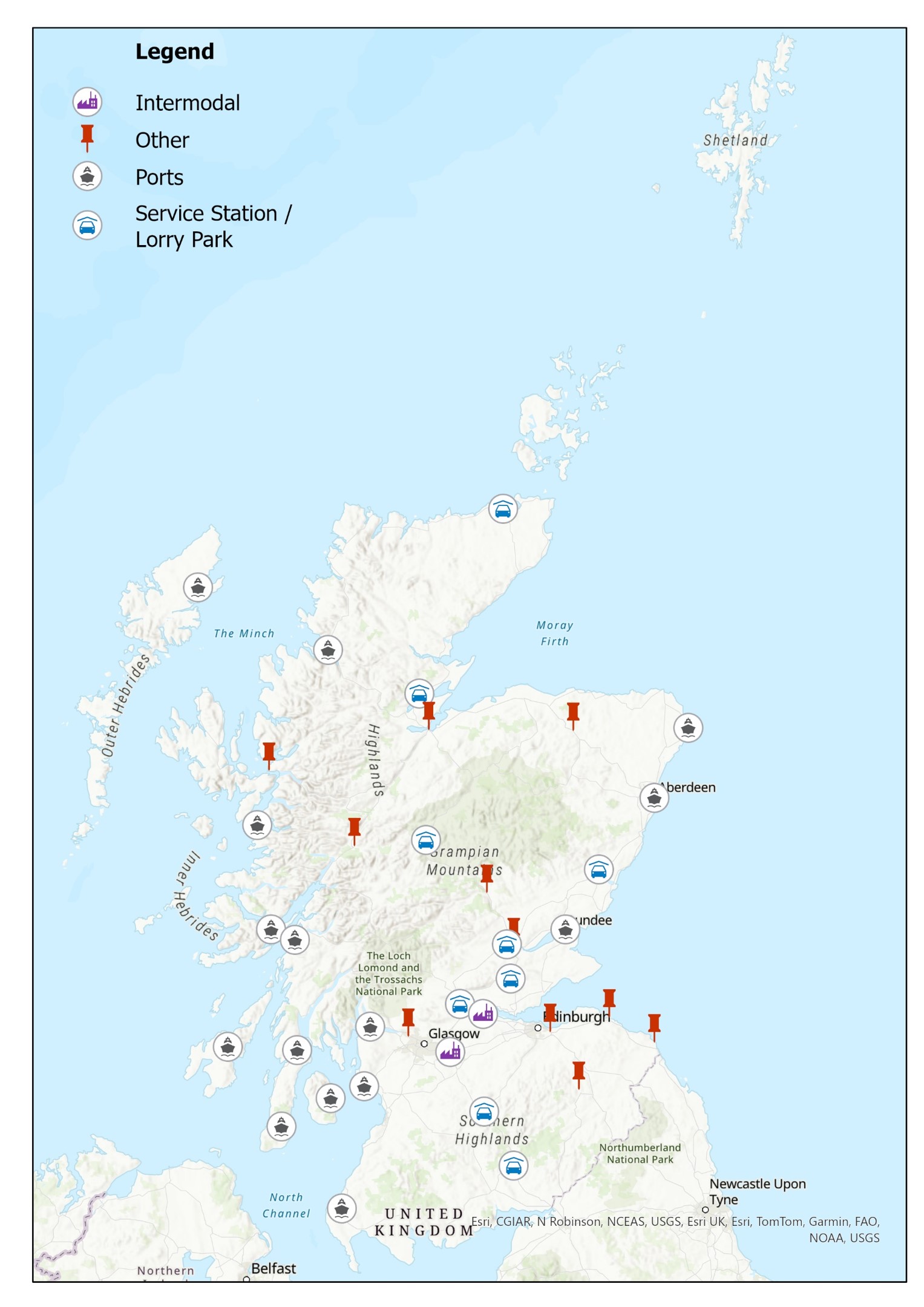Findings Overview
Note on Scope of Findings
The data covers a small number of fleets in operation in Scotland, representing about 1% of all registered trucks, and accounting for 80,000 individual journeys. The plan, over the next year, is to improve the quantity of data (see below) to reflect a wider variety of HGV routes, including tramping and 24/7 logistics operations, strengthening the case for investment in specific locations. This data is of interest to fleet CPOs, DNOs and all HGV fleets looking to understand what en route energy infrastructure needs to be in place to support their vehicles.
As technology progresses, increased range or charging speed may be achieved, but it is not anticipated to happen so rapidly as to change the broad conclusions of the results which will enable a smooth transition towards zero-emission targets. Repeated analysis will be needed in future years as technology continues to evolve.
Data Request to Operators
The project should be considered a proof of concept that can be improved with more data. We encourage fleet operators to share their telematics data with the CSRF.
Contact our team at cls-info@hw.ac.uk for data sharing. Details of data sharing arrangements are available on Heriot-Watt University’s Centre for Logistics and Sustainability website.
The study found that all routes are feasible if both depot and en route charging are available. If only depot charging is provided with no access to shared charging, only 66% of routes modelled could be completed.
The analysis of the available data identified several key freight corridors experiencing high HGV traffic volumes. These corridors primarily connect major population centres, industrial zones, and ports across Scotland. Of particular importance for the available fleets in the dataset are the existing established critical corridors for freight movement within Scotland (Figure 1).
Some remote routes require further analysis. View Future Work.

The model, combined with stakeholder feedback, has suggested specific locations as a priority for en route chargers (shown in Figure 2). These are based, where possible, on existing locations such as truck stops, lorry parks, intermodal hubs and ports. Land within or adjacent to these host charger locations, for example ports, will be required to allow installation of rapid chargers and space for HGVs to park and charge. The charging network has only been modelled across Scotland; locations in England have not been included.
All routes were similarly modelled for hydrogen vehicles. However, these findings should be considered in the context of evidence in the supply chain that battery electric HGVs are dominating due to better maturity and lower cost than hydrogen HGVs. The cost differential between electricity and hydrogen is likely to remain in the future for zero emission HGVs as the production of green hydrogen is less energy efficient than the production of electricity. Sources (1-5) are listed in the bibliography.
Adding new en route chargers in strategic locations (shown in Figure 2) will unlock the full potential of electric fleets. More data is required to ensure all locations have been identified.
